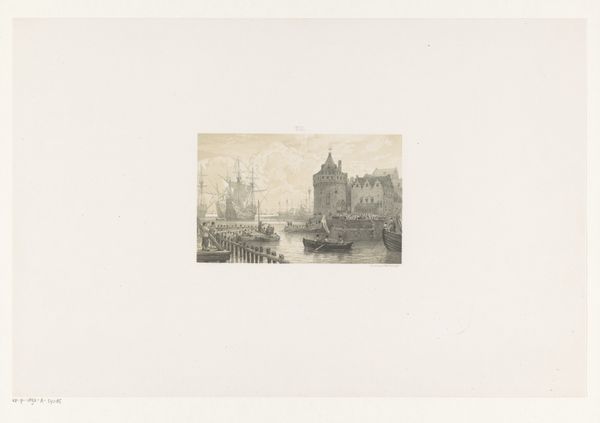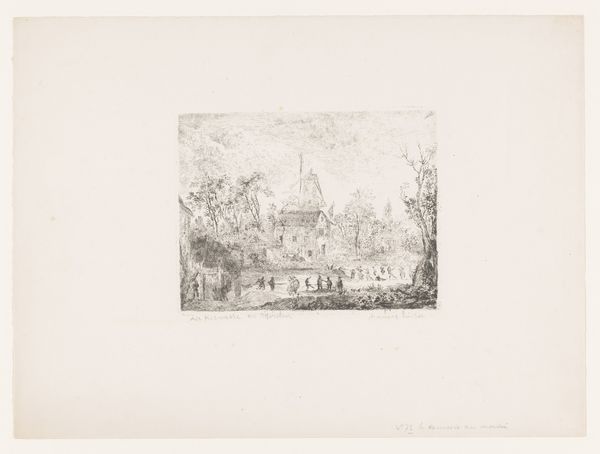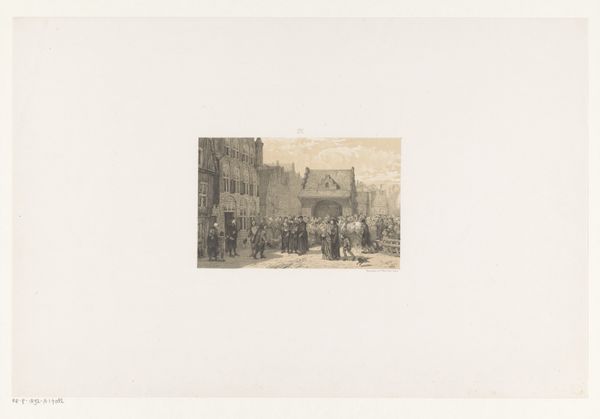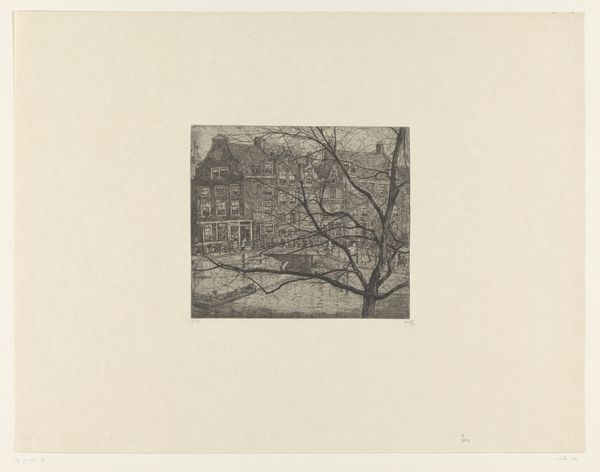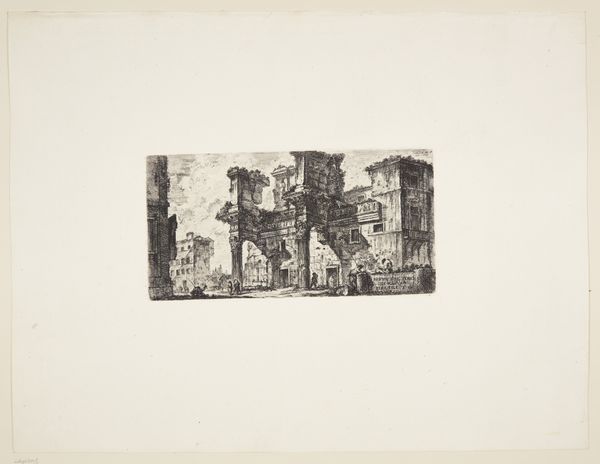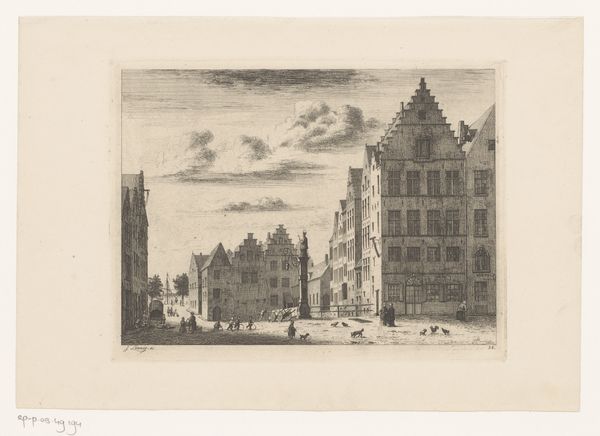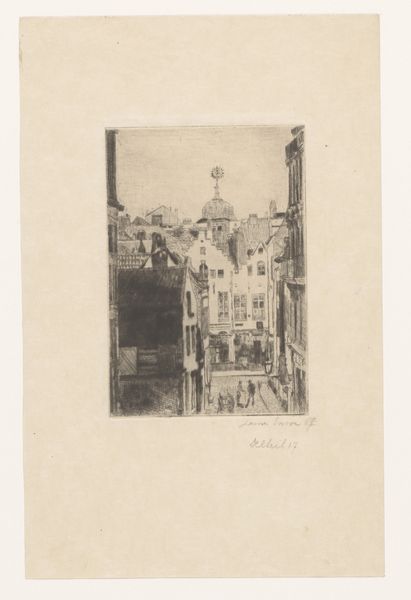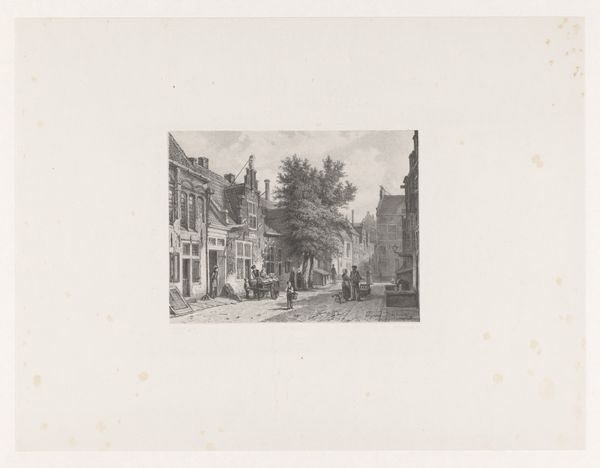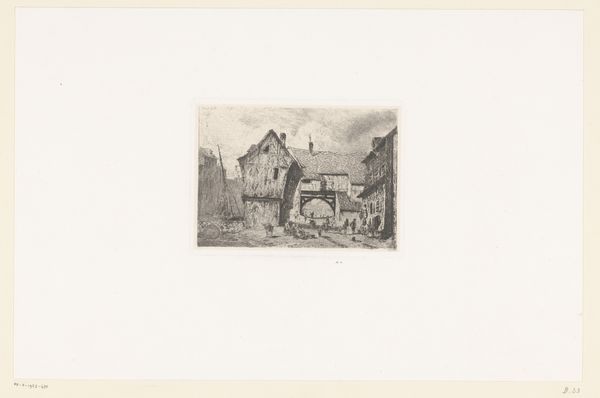
drawing, print, etching, paper, ink
#
drawing
#
dutch-golden-age
# print
#
etching
#
paper
#
ink
#
cityscape
#
genre-painting
#
realism
Dimensions: height 236 mm, width 263 mm
Copyright: Rijks Museum: Open Domain
Curator: Good morning. Here we have an etching and ink drawing on paper, titled "Het Paalhuis en de Nieuwe Brug te Amsterdam in de winter" made sometime between 1847 and 1889, currently held at the Rijksmuseum. The artist is William Unger. Editor: It's remarkable. A delicate yet bustling cityscape. The frosty atmosphere is almost palpable, rendered with a very fine network of lines and marks. Curator: Yes, Unger’s work here showcases a scene filled with everyday activity. Observe how the artist captured a busy winter market in Amsterdam; each figure tells a story, highlighting social dynamics of the time, class interactions, and the communal aspect of gathering during the harsh winter. Editor: Absolutely, the realism style emphasizes form. It’s all in the light and shadow, wouldn’t you agree? The stark contrast makes the structure and architectural details all the more evident. Curator: And look closely at the etching technique! Unger wasn't just creating an image, he was part of a printmaking industry with all of its requirements for division of labor and accessibility. Printmaking allowed images to reach a wider audience. Etchings could reproduce social narratives but also function as trade item in themselves. Editor: A commodity in reproduction… fascinating. I’m much more taken with the details; each brick, each person's posture… Curator: Yes! Every carefully chosen mark works to recreate the city of Amsterdam in the 19th century. From how architecture and people create space in the etching and the relationship that these subjects of the work share in material, we gain great insights to Amsterdam during the 19th Century. Editor: Indeed. It shows just how powerful simplicity in art can be. Such delicate and intricate lines and details and an even more elaborate narrative from each little feature. The texture alone breathes a frosty morning to life. Curator: Precisely. It connects us to a time and place, inviting us to consider not just the scene, but the processes that brought it into being. It’s fascinating to think how mass consumption and material culture intersect here. Editor: Ultimately, it's about light, structure, and composition and all these aesthetic qualities speak volumes on their own. Curator: The production and consumption cycle makes all the difference when reflecting upon this wintery cityscape scene.
Comments
No comments
Be the first to comment and join the conversation on the ultimate creative platform.
